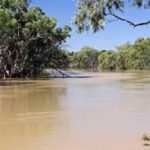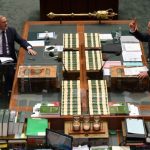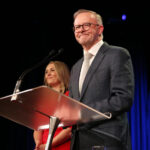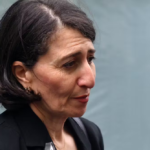The International Astronautical Congress: An IPC Co-Chair’s Perspective

Each year the International Astronautical Congress (IAC) attracts the world’s space leaders to discuss new technologies, new business opportunities, policy, the development of the future workforce and so much more. This year the Adelaide Convention Centre hosted more than 4500 IAC delegates from around the world from the 25th – 29th September.
Our work began back in 2014 when the Space Industry Association of Australia (SIAA) won the right to host the IAC 2017. Hosting a congress of this size is a huge undertaking, but it presented an opportunity to showcase the Australian space industry on the world stage and promote increased collaboration and coordination in Australia. The announcement of an Australian Space Agency by Senator Simon Birmingham at the Opening Ceremony was the culmination of years of effort by many groups and a great way to start the week. It changed the conversation from “why doesn’t Australia have a space agency?” to “how can we work with you?” Adam Spencer taking a selfie with Andy Thomas during the open ceremony also gave a clear signal that the week was going to be a lot of fun.
The IAC is the major annual event of the International Astronautical Federation (IAF). The program is delivered by the International Program Committee (IPC), 38 technical committees consisting of hundreds of volunteers from all around the world. In 2017 these committees reviewed 3440 abstracts and selected 2496 for presentation across 179 sessions in 32 Symposia. The IPC Steering Group also selected the 8 Plenary events, 2 Highlight Lectures and 2 Late Breaking News events from a very competetive international call for proposals. Recordings of the Plenary events will be made available via the IAF YouTube Channel.
I’ve been a member of the IPC for more than 10 years and was honoured to lead this team of international experts in 2017 as IPC Co-Chair. I was also honoured to follow in the footsteps of Prof Sandra Ramírez Jiménez, the first female IPC Co-Chair in 2016. In 2018 I hand over the responsibility to another very talented woman, Prof Christiane Schmullius.
The congress theme was chosen to reflect the innovative nature of the space industry, the growth of space start-ups and the importance of developing the future workforce. The theme also highlighted the importance of the industry to our future security. Space derived data and services are critical to our monitoring of the environment, agriculture, marine, aviation, logistics and much more. Our aim was to promote the economic and social impact of the space industry and highlight Australia’s capability in these areas, including our contribution to preserving the space environment through improved space debris tracking, and I think we succeeded.
The week was full of announcements. Here are a few highlights;
- The Federal Government announced that Australia would establish a national space agency
- CSIRO announced a $10.45 million 7-year deal with SSTL for 10% access to the NovaSAR satellite.
- The South Australian Government announced the establishment of the South Australian Space Industry Centre (SASIC) including grants of $1 million per year to develop local space businesses and support research and development.
- Minister Pyne announced a $9.96 million partnership between the Australian Defence Force Academy and the Royal Australian Airforce to deliver a 3-year space research and development program.
- Minister Pyne announced the first four successful projects under the DMTC High Altitude Sensor Systems Program (HASS). The HASS program leverages a $2.7 million CSIRO investment to deliver a $6.1 million program to enhance Australian defence capability and build industrial capacity in sensor and on-board data processing technology for unmanned aerial systems and small-satellite platforms.
- The Northern Territory Government joined the existing MOU between the ACT and South Australian Governments to support Australia’s space industry.
- DLR signed MOUs with ANU and the USYD (DLR already has an MOU with LaTrobe University).
- ANU and UNSW Canberra signed an MOU to provide an end-to-end capability for mission and payload design, assembly and testing.
The congress also hosted several memorable events, most notably, presentations by Elon Musk and former NASA Administrator Charles Bolden, who was awarded the IAF World Space Award.
Dr Naomi Mathers is Deputy Chair of the Space Industry Association of Australia. She was a member of the team that brought the International Astronautical Congress (IAC) to Australia, leading the technical program as IPC Co-Chair. She was a member of the Australian Government Space Industry Innovation Council and has represented Australia at the Asia Pacific Regional Space Agency Forum (APRSAF) and on the International Space Education Board (ISEB). She recently contributed to an ACIL Allen review of Australia’s Space Capability for the Department of Industry, Innovation and Science.













